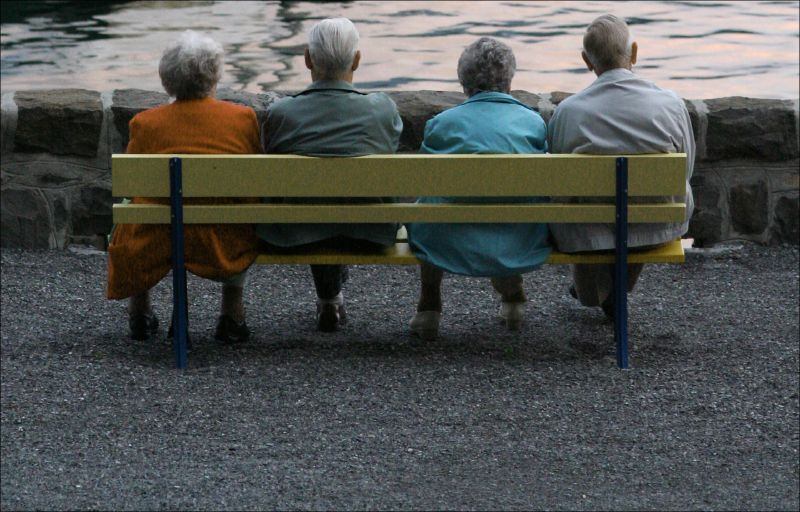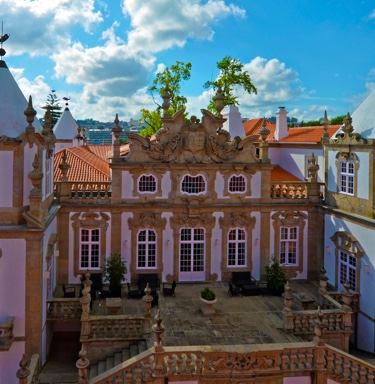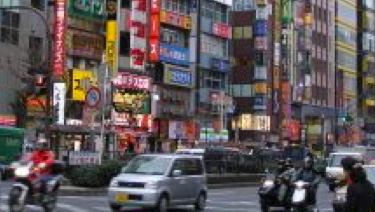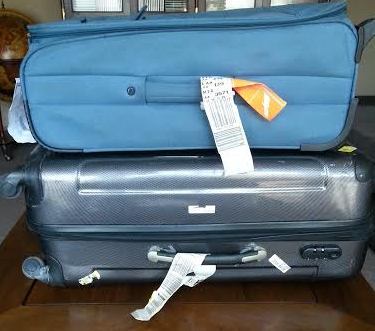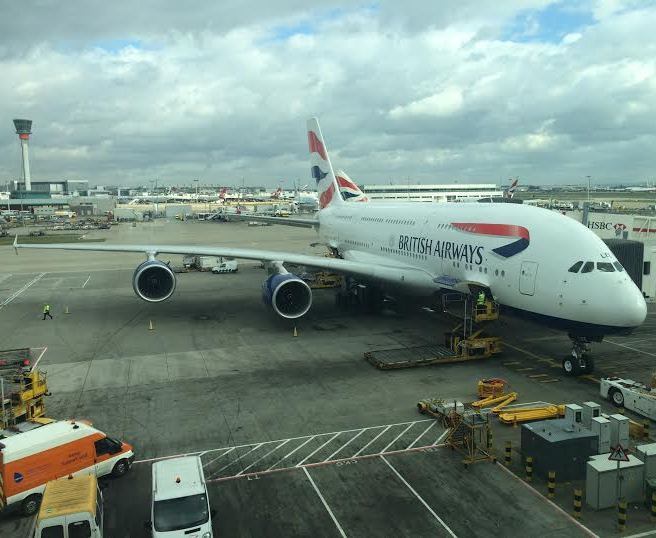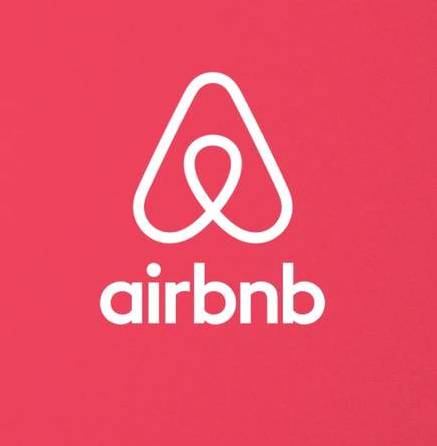Travel Tips
Off the Brochure Travel Guide: Doha, Qatar
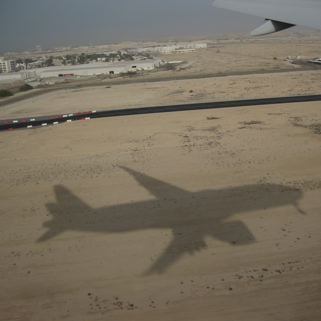 David Latt traveled from Seattle to Qatar on the delivery flight of a new 777-200LR that would join Qatar Airways’ fleet.
David Latt traveled from Seattle to Qatar on the delivery flight of a new 777-200LR that would join Qatar Airways’ fleet.
In his final installment of the Qatar Chronicles, he reports on his findings both on and off the brochure in the capital city of Doha.
THE STORY OF QATAR
Qatar occupies an elongated peninsula on the eastern edge of Saudi Arabia. Jutting into the Persian Gulf, the landscape is dominated by flat, sandy expanses.
A self-described moderate Muslim country, religion and politics are as tightly interwoven in Qatar as anywhere else in the Middle East. There may not be Saudi-style religious police patrolling the streets, but this is not relaxed Dubai or Cairo.
Visitors to Qatar are told to enjoy their pleasures “modestly.” Women are asked to cover their arms in public. Drinking alcohol is forbidden except in licensed venues. Even the Qatar Tourism and Exhibitions Authority alerts visitors that public displays of affection between men and women are discouraged.
Most of the 1.2 million inhabitants of Qatar live in and around Doha. Only a few decades ago, Doha was a small fishing and pearl-diving village. Historically, there weren’t compelling reasons to travel to Doha: It was not at the nexus of trade routes; no ancient archaeological sites declared Doha as an important city in the ancient world; cruise ships rarely stop in Doha, the capital and main port, preferring instead to call at Bahrain and Dubai.
Read the previous entries in the Qatar Chronicles… Qatar Chronicles: Lounging in Luxury, From Rainy Seattle to the Desert City of Doha and From the Boeing Factory to the Sky.
But the discovery of oil and immense natural gas reserves changed Qatar’s future. In a few decades energy development has made Qatar one of the richest per capita countries in the world.
The transformation of Doha from a sleepy, backwater village into a dynamic modern urban center was the vision of one man, the Emir of Qatar, Sheik Hamad bin Khalifa al-Thani. He assumed the leadership of the country in 1995 when he deposed his father as Emir.
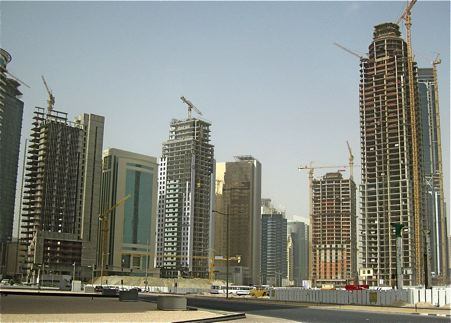 From the beginning of his reign, Sheik Hamad had big plans for his country. Rejecting narrow parochial interests, he used Qatar’s vast wealth to make Doha an important center for Middle Eastern life.
From the beginning of his reign, Sheik Hamad had big plans for his country. Rejecting narrow parochial interests, he used Qatar’s vast wealth to make Doha an important center for Middle Eastern life.
Today, the business of Doha is business: New medical buildings, universities, condominium developments, business complexes, shopping centers, sporting arenas, hotels, and spas rise up before your eyes. Driving through town it’s easy to fool yourself into believing that literally every single building is under construction.
Sheik Hamad is also a master of balancing the interests of the Arab world on one hand and an alignment with the Western democracies—particularly the U.S.—on the other.
In 1996 he created Al Jazeera, a global television network devoted to putting an Arab perspective on the news. In 1997 he gave women the right to vote. In 2006, Qatar hosted the Asian Games, and in 2008 he donated the land for a Catholic church. He supports Palestinian causes, at the same time he allowed the U.S. to establish a large military base outside of Doha. After Hurricane Katrina, he donated $100 million to New Orleans.
And last, but certainly not least, the Sheik has also been the driving force behind upgrading Qatar Airways into a premium airline, expanding its routes to the major cities in the Middle East, Asia, Europe, and the U.S., with non-stop flights to New York, Washington D.C., and now, Houston.
GETTING THERE AND AROUND
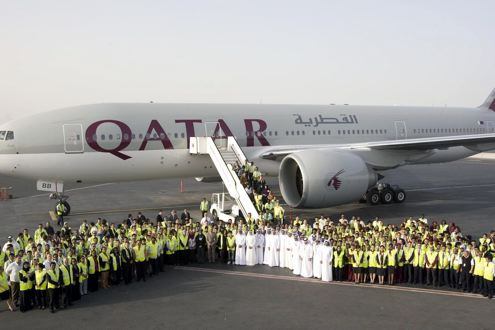 Several airlines fly to Doha, but Qatar Airways is generally the most accessible. Doha is its hub, so there are frequent flights to most parts of the world, including the U.S. From personal experience I can say that the planes are new and very comfortable, especially in business class. The food is first-rate. The flight crews are friendly and solicitous, qualities that are to be prized.
Several airlines fly to Doha, but Qatar Airways is generally the most accessible. Doha is its hub, so there are frequent flights to most parts of the world, including the U.S. From personal experience I can say that the planes are new and very comfortable, especially in business class. The food is first-rate. The flight crews are friendly and solicitous, qualities that are to be prized.
Once you get there, traveling around Doha isn’t easy. There are only a few taxis and renting a car isn’t advisable. Although the actual roads in Doha are good, there is so much construction, detours make a simple trip incredibly complicated. If possible, share the cost of a driver with friends. Check with your hotel’s concierge for recommendations.
DRINKING AND DINING
Unfortunately for most visitors, Doha is an expensive city. Many expatriates come to work in Qatar hoping to save a good deal of their salaries, only to discover that they can barely pay for housing and eat out occasionally.
The major hotel chains are represented in Doha: Marriott, Four Seasons, InterContinental, Movenpick, Ramada, Starwood, Ritz-Carlton, Sheraton, and Sofitel. Room rates are comparable with those in London, Paris, and New York.
Most visitors to Doha eat in the hotels where the food can be very good but, again, very expensive. A delicious group dinner at Il Teatro at the Four Seasons cost a small fortune: a campari and soda was about $30 US; gnocchi with vegetables (really good) was $35; a plate of Italian artisan cheeses was $40. The experience? Priceless.
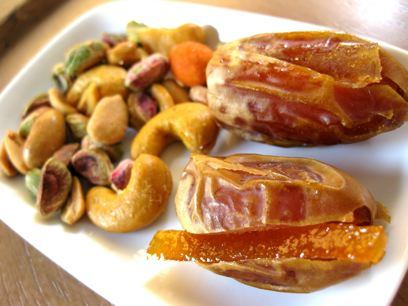 Besides dates and hammour—a delicious white fish that we ate as often as it was on the menu—very little food is produced locally. With poor soil and scorching heat in the summer, Qatari agriculture is a contradiction in terms. Top soil imported from Iran, Syria, and Jordan has improved the situation so that Qatar is now able to produce about 20 percent of its leafy vegetables.
Besides dates and hammour—a delicious white fish that we ate as often as it was on the menu—very little food is produced locally. With poor soil and scorching heat in the summer, Qatari agriculture is a contradiction in terms. Top soil imported from Iran, Syria, and Jordan has improved the situation so that Qatar is now able to produce about 20 percent of its leafy vegetables.
For Arabic food in an upscale setting, the Al Liwan in Sharq Village & Spa (https://sharqvillage.com/) operated by the Ritz-Carlton, serves a Lebanese buffet in an airy dinning room next to the pool. With the only sushi bar in town, Asia Live in the Doha Marriott features Japanese and Chinese dishes. The Doha Marriott also serves Indian seafood at Taj Rasoi.
For less expensive Indian food, catering to the many expats from the subcontinent, Bukhara in the Khalifa Tennis & Squash complex has a full menu including tandoori chicken. Za Moda at the InterContinental has a wood-fueled oven and turns out a pizza that would make any Italian proud.
For the most part, hotel restaurants are the only places in town to have alcoholic drinks. Many hotels like the Movenpick Towers are dry, so if you want a glass of wine or a cocktail, you have to go across the street to the Four Seasons.
 An advantage to being in a Muslim country is the wide availability of fresh fruit juices. At the Al Liwan, for example, we were offered freshly made watermelon, mango (delicious!), pineapple, papaya, melon, mint-lemonade (another favorite), apple, orange, and grapefruit juice.
An advantage to being in a Muslim country is the wide availability of fresh fruit juices. At the Al Liwan, for example, we were offered freshly made watermelon, mango (delicious!), pineapple, papaya, melon, mint-lemonade (another favorite), apple, orange, and grapefruit juice.
Although much of the affordable food in Doha is limited to McDonald’s and Burger King, you can find reasonably priced grilled meats and Arabic mezze—falafel, hummus, olives, pickles, yogurt, mutabbal or babaghanoush, labneh, etc. Head to restaurants in the Souq Waqif (www.soukwaqif.com) such as Al Bandar (www.albandarrestaurant.com) and Al Tawash, the Lebanese restaurant Assaha (www.assahavillage.com) on Hamad Al Kibir Street or Turkey Central Restaurant in the old downtown area.
Though not easily accessible, good eats can also be found in a block-long stretch of storefront restaurants on the access road that runs parallel to Sheik Khalifa Street, just behind Al Jazeera. Besides McDonald’s there were also candy stores, bakeries, and rotisserie chicken shops.
At Al Omara Sweets & Restaurant, I had the best falafel I’ve ever eaten. Made fresh, the falafel was crunchy outside, studded with sesame seeds, and soft as a pillow inside. Best of all, it cost only about 50 cents for six.
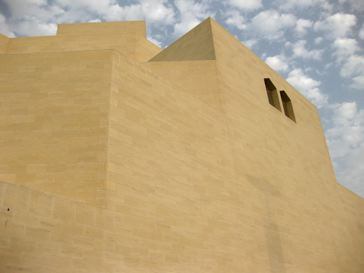 CULTURAL STOP
CULTURAL STOP
In many cities of the world, visiting a church, mosque, or temple gives visitors a view into the culture, art, and history of a people. In Doha, mosques can be strict about allowing non-Muslims, but the Museum of Islamic Art (www.mia.org.qa/english/) offers a historical look into the heart of Islamic culture from the 7th to the 19th century. Designed by the world famous architect I.M. Pei, the exquisite building sits on its own island perched on the edge of the Gulf.
Inside, well-mounted exhibits fill three of its five floors. Using a collection of manuscripts, household objects, jewelry, and tapestries, the exhibits tell the story of Islam’s spread through the Middle East, Europe, and Asia.
SHOPPING – FROM HIGH-END TO THE SOUQ
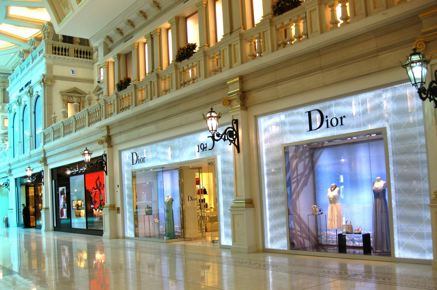 If you like high-priced designer names, Doha is a shopper’s paradise. In the desert climate, air conditioned malls provide not only great shopping but welcome relief from the heat. The best products offered by upscale designers from around the world are available at the Royal Plaza, City Center Doha, Landmark, The Mall, the newer Villaggio Mall, and the soon to-be-opened shopping complexes on The Pearl, a large development built on an island of reclaimed land.
If you like high-priced designer names, Doha is a shopper’s paradise. In the desert climate, air conditioned malls provide not only great shopping but welcome relief from the heat. The best products offered by upscale designers from around the world are available at the Royal Plaza, City Center Doha, Landmark, The Mall, the newer Villaggio Mall, and the soon to-be-opened shopping complexes on The Pearl, a large development built on an island of reclaimed land.
The local shopping areas are called souqs which are frequently organized around what they sell. The Gold Souq is off Grand Hamad Street. Souq Al-Jabor on Al Ahmed Street focuses on leather goods.
Souq Waqif, the large souq, has a mix of tourist curios, native dress, beads, spices, perfume, clothing, falcons, out-door coffee shops, and restaurants. Building a new complex to look traditional could have a Disney-touch, but locals and tourists have embraced the new Souq Waqif and pack its narrow alleyways at night.
Unfortunately in Qatar, where there is little native industry, most trinkets and curios aren’t produced locally. You’ll see goods from Middle Eastern countries such as Egypt, Jordan, Syria, and Morroco, or from India and China. Even the famous pearl divers are long gone, and today pearls come from Japan and China.
NIGHTLIFE
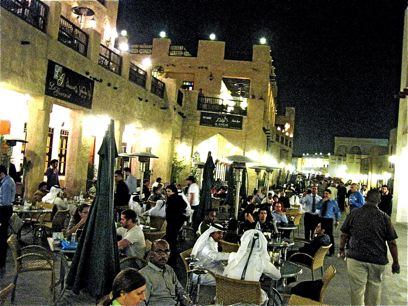 Unlike Dubai which has a Vegas-like atmosphere, life in Qatar is more subdued. Most Qataris and the expats who work in Doha do their entertaining at home, while locals tend to frequent hotel clubs and bars where alcohol is available.
Unlike Dubai which has a Vegas-like atmosphere, life in Qatar is more subdued. Most Qataris and the expats who work in Doha do their entertaining at home, while locals tend to frequent hotel clubs and bars where alcohol is available.
The Ritz-Carlton’s Admiral’s Club has a terrace that benefits from a cooling sea breeze. Also at the Ritz-Carlton, Habanos is a cigar bar where you can enjoy sitting in plush leather chairs, sampling a good selection of fine liquor.
If you want to watch sports on TV while drinking a few beers, try Aussie Legends in the Rydges Plaza Doha or Garveys in the European Family Club on Al Aziziyi Street. The Four Seasons’ Library Bar & Cigar Lounge has a good wine list and an excellent selection of cocktails.
Be forewarned, the prices at the Four Seasons are downright scary. You’ll need to be oil-rich just to have a couple of perfect Manhattans and a snack.
OUTDOOR ACTIVITIES
In the summer months, the temperatures push past 120 degrees and the humidity keeps pace, so Doha isn’t a city to visit in June, July, August, or September unless business demands it. In the fall and winter months, the temperatures are moderate and, at times, downright chilly.
Walking along the Corniche, the seafront promenade, is one of the great pleasures of Doha. The view is terrific although in some spots the traffic and construction noise detract from the effect. There aren’t public beaches for sunbathing. The Ritz-Carlton’s Sharq Village & Spa has a small man-made beach for guests but it faces the port and doesn’t have the best view. In a few years the Emir plans to relocate the port facility to better exploit the natural beauty of the bay.
If you want to get a view of the city from the water, tours are offered on the Arabian wooden sailing boats, dhows.
Being inside one new building after another, it’s possible to forget that you’re in the Middle East. A trip outside the city helps remind you where you are.
When expats working in Doha want to take a break from their jobs and the noise of 24-hour a day construction, they head south of the city to the sand dunes and the Inland Sea where they can take camel rides, have dune buggy tours of the desert, and enjoy barbecues on the beach.
For our trip to the dunes, we hired a guide from Gulf Adventures (www.gulf-adventures.com) who gave us a tour of the dunes that included his driving straight down a steep dune as fast as he could. At first scary, we loved them so much, we’d egg him on to find another big dune and dive bomb to the bottom.
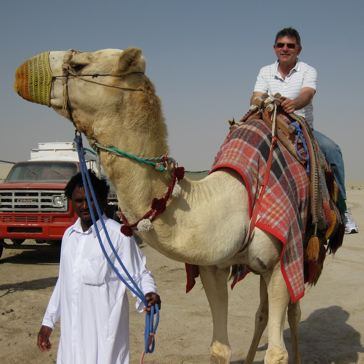 He encouraged us to take a camel ride. (I had my picture taken so I could show my sons that I’m not really as square as they think.) Enjoying a glass of sweetened mint tea, we finished the tour sitting under a tent next to a sand dune swapping stories.
He encouraged us to take a camel ride. (I had my picture taken so I could show my sons that I’m not really as square as they think.) Enjoying a glass of sweetened mint tea, we finished the tour sitting under a tent next to a sand dune swapping stories.
SPORTS
To make Doha a destination in the Arab world, the Emir made sports a priority. The staging of the Asian Games in December, 2006 at the Aspire Zone announced to the world that Doha was a world-class sporting venue.
And if you are a horse racing fan, you already knew that.
The Arabian horses bred and trained in Qatar are renowned in the Arab world. Sheikh Hamad din Ali Al Thani’s equestrian complex Al Shaqab (www.alshaqab.com) showcases the talents of purebred Arabian horses as do the Thursday races at the Racing & Equestrian Club (www.qrec.gov.qa) (October to May).
Although not as elegant, go to Al Sheehaniya Camel Race Course to see the very popular camel races.
Given the heat of the Gulf, maintaining grass is a difficult and expensive proposition. Even the small patches of grass that decorate traffic islands require a thorough soaking three to four times a day during the summer. So it is amazing that Doha actually has a golf course, the 18-hole Doha Golf Club (www.dohagolfclub.com). Just as improbably, there is also one ice skating rink at Winter Wonderland at the City Centre Mall.
VISIT DOHA NOW OR IN FIVE YEARS?
If you have business in Qatar, this is an exciting time. The city changes every day with new and dynamic projects. Because the Emir took a less frenetic approach to development, it looks as if Qatar will weather the global economic slowdown more gracefully than other places such as Dubai.
To get the full benefit of what Doha offers the traveler, it might be best to wait awhile. Within the next several years the major construction projects will be completed.
The new international airport will have opened. The port will have been relocated, giving the new luxury hotels and office high-rises unobstructed views of the Gulf. In that time the transportation system will have expanded and more restaurants will have opened. New museums like the National Museum of Qatar, designed by Jean Nouvel, will be open. Robert De Niro will have launched the Tribeca Film Festival in Doha.
When all that has been done, Sheik Hamad bin Khalifa al-Thani may have achieved his vision of Qatar as a cultural center for the Arabic world and as a bridge between east and west.
By David Latt for PeterGreenberg.com. Check out David’s blog at www.menwholiketotravel.com.
Headed to the Middle East? Check out these articles:
- Qatar Chronicles: From the Boeing Factory to the Sky
- Qatar Chronicles: From Rainy Seattle to the Desert City of Doha
- Qatar Chronicles: Lounging in Luxury
- The Dispatches from Dubai Series
- A Day in Dubai Without Spending a Dime
- The Toughest Job in the Middle East: Minister of Tourism
- US Embassy Attack in Yemen Stirs Travel Fears
- Off the Brochure Travel Guide: Cairo, Egypt
Check out more guides from our Off the Brochure Series here:
View Off the Brochure Maps in a larger map





